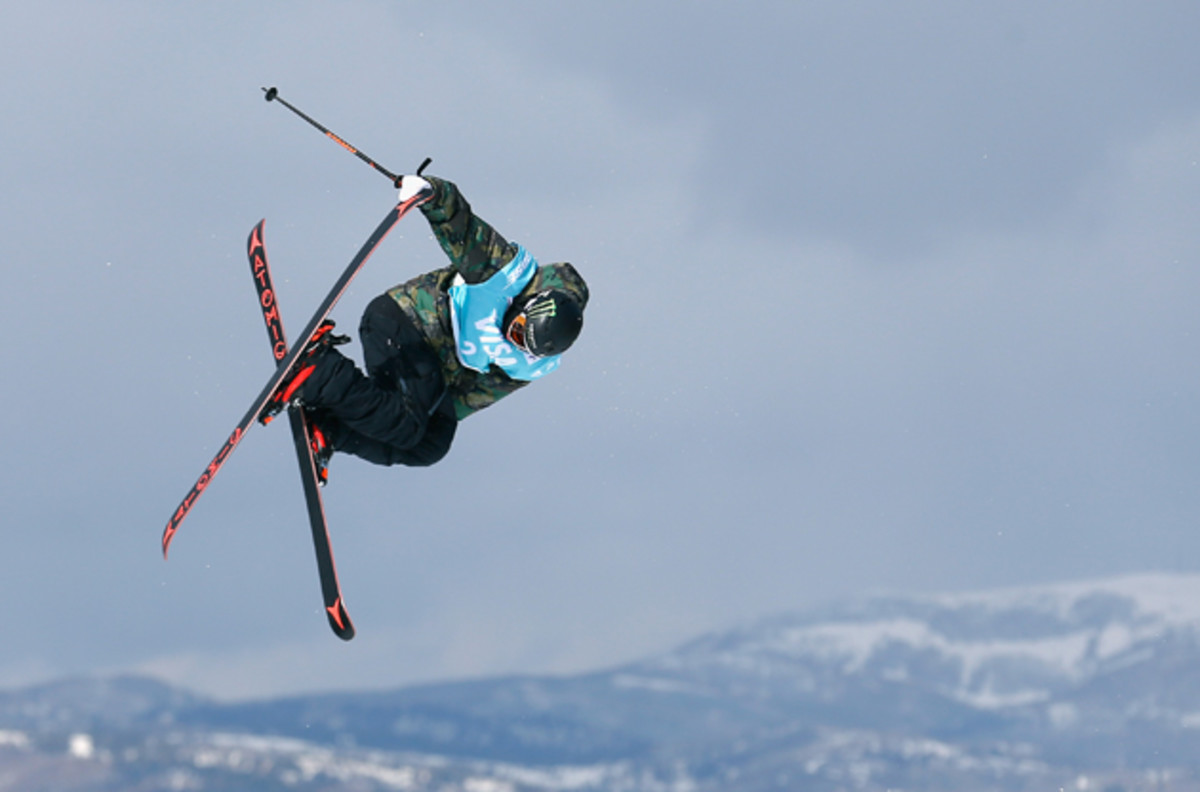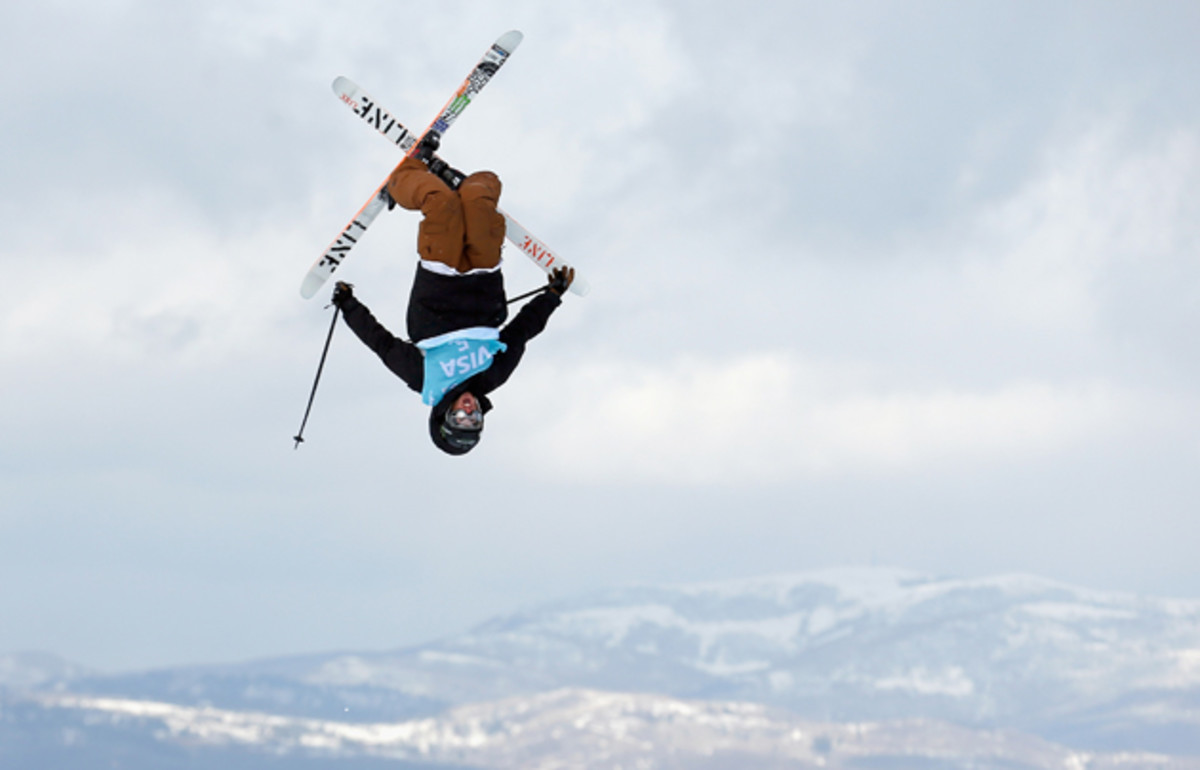Flight School: Freestyle skier Gus Kenworthy's art of becoming inverted

The sound of trampoline springs stretching and creaking could often be heard outside the Kenworthy home on cool summer evenings in Telluride, Colorado. Gus, the youngest of the three Kenworthy boys and an Olympic silver medalist, practiced variations of flips and twists in his parent’s backyard. The trampoline was his testing ground where he would fine-tune maneuvers with friends before applying them on skis each winter in the terrain park at the local resort.
“That tramp was the best investment I ever made,” says Peter Kenworthy, Gus's father.
Last winter, in its Olympic debut, free skiing was officially born to the mainstream as the 23-year-old Kenworthy (silver) and fellow Americans Joss Christensen (gold) and Nicholas Goepper (bronze) completed a US sweep in the slopestyle event in Sochi, putting on a fantastic display of athleticism that essentially justified years of progression in a sport born from friendlys on the slopes. A point that was reinforced in February as Kenworthy won the Air & Style event at the Rose Bowl in Pasadena, a showcase of X Games sports put on by Shaun White. It was the first time skiing had been included in the event and with a four-story gap jump, it didn’t disappoint.
But as pipe and slopestyle skiing events continue to trend in the mainstream, it begs the question to the casual observer, where are these talented athletes training and how are they progressing to this incredibly high level? The answer isn’t simple.
[daily_cut]Like snowboarding and other action sports, most athletes embedded in the game are self-taught and readily admit coaches, unless they were serious about the new discipline themselves, were more facilitators than anything else. For a generation of kids, technique was learned from watching their favorite skiers in videos produced by core production companies like Poor Boyz and Matchstick—skiers who’d left traditional freestyle programs focused on mogul skiing. Or they'd learn from studying magazine photo spreads and the captions that named these new, progressive tricks. Those techniques were honed during on-mountain sessions as “rat-packs,” or young groms, ripped around resorts pushing each other to improve one another’s style and amplitude.
This madness was the method for young skiers like Kenworthy. “I wasn’t just aimlessly going out on the mountain by myself,” he says. “I was super competitive by nature and wanted to be a professional skier. I looked up to all the pros in the videos. I wanted to learn new stuff and push myself. Sessioning with my friends, we’d really watch each other and try to one-up one another to get better.”

To the uninitiated, these inverted tricks seem to push the edge of sanity as athletes fly through the air at high speed, reaching incredible heights while taking off and landing backwards, rarely staying upright as they move through the air.
“As a parent, I never really worried too much,” says the elder Kenworthy. “Gus had a natural grace in the air and a lot of athletic ability. Of course there were injuries and his mother might feel differently, but it’s all a progression. He didn’t start out doing 1400s or triples. It might seem to be high risk to others but he worked hard and only tried new things when he was ready.”
Teton Gravity Research: Learning the basics of avalanche safety
sites as a big influence. While he stops short of calling it a defining moment, Schiller says the Olympic display last year certainly justified years of hard work.
“For us, there were no coaches, no gyms, no physios,” Schiller says. “You were just riding with your buds everyday, trying to do well in the events so you could go travel and make s--- happen. It’s awesome to see how the sport has come along. But [even with the structure] it’s still freeriding and being creative. Our sport has that mentality and even with Olympic [inclusion], it’ll keep that ‘free’ identity.”
But now that free skiing has joined the Olympic movement and national ski associations are involved, the training and supervision of athletes is bound to become more formal, and that isn’t all bad.

In the past, some of the best skiers in the world have openly admitted their training tables consisted mostly of French fries, Skittles and microwaved pizza. Kenworthy says he watches his diet closely, avoiding sugar if he can, but more to avoid getting a gut for summers at the pool. But Schiller—who at 28 has had five knee surgeries and has pulled back from competitions—appreciates the idea of training.
“I once had a photographer tell me I had three years so I’d better take advantage of it,” Schiller says. “Growing up I barely stepped foot in a gym until I had my first injury. But it was a blessing in disguise to get hurt and be forced to train. In skiing, you can have your entire life taken away from you in a second and lose everything you’ve been working for.”
Kenworthy will continue to do what has worked for him his entire life: summer sessions on the trampoline. He stays sharp on fellow competitor and friend Bobby Brown’s Olympic grade trampoline in Denver where they play games to one-up each other like PIG. Along with offseason skiing in New Zealand and South America, Kenworthy is a firm believer in getting better by doing.
“I’ve been hurt and I’m sure I’ll get hurt again,” he says. “I’m cool with knowing it’s going to happen. But the only way to get better at skiing or anything else, is by skiing and working on specific things. I don’t think the gym or the diet makes the ultimate difference.”
